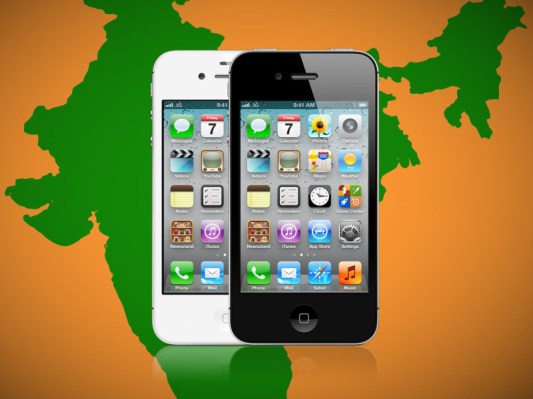Executives at Apple in India are preparing to celebrate passing $1 billion in annual revenue in the country for the first time this financial year.
But Apple today remains a small player in India, accounting for less than 2% of all mobile sales in 2013 according to one estimate. In a market where more than 90% of the 224 million phones sold in 2014 will be bought by first-time users, Samsung, Nokia and Micromax phones are expected to take the lion’s share, leaving Apple a bit-player.
According to several estimates, including some sources at Apple India, the company shipped 1 million iPhones in 2013. As a point of comparison, newly minted iPhone carrier China Mobile has clocked up 1 million in pre-orders alone.
There have been reports that Apple is now considering a drastic strategy: according to the Economic Times, Apple plans to push a legacy model, the 8GB iPhone 4, at a price of about $250 to get more aggressive in India. We have heard from reliable sources that nothing like this is in the cards because there is “no way Apple would sell phones that cheap.”
But it is correct that it wants to use an older model to target new, aspirational consumers who are ready to pay an extra $100-$150 to own an iPhone.
Our source tells us that Apple is planning to sell 8GB iPhone 4 models in India for around RS 22,000 (about $358). That’s about $70 less than the previous retail price of around RS 26,500 (about $431) when it was launched, if not quite $250.
The pricing dilemma
India will account for nearly a quarter of the 1.03 billion smartphones that will be sold in 2014 globally according to Mediacells. But iPhones will only be a small proportion of that. Even the most aggressive estimates do not expect iPhone sales to cross 1.5 million units this year.
So far, Apple has attempted to make up for its premium pricing by throwing in extra offers such as buyback offers and option to pay in monthly installments.
Part of the problem has been that India’s average phone pricing runs almost at complete odds with Apple’s bigger pricing strategy. In the last launch of new models, the “cheaper” 5C variant works out as more expensive ($525) to many top end smartphone models from Samsung (around $400) and Nokia (about $300), and that contrast is even greater in India.
Now, Apple wants to target the sub-$350 smartphone category to woo aspirational users who are ready to pay an extra $100-$150 for owning an iPhone.
According to a source who knows Apple’s India plans, this deal could be sweetened further by offering buybacks and monthly installment options to lower the upfront cost for buyers.
Billion-Dollar baby
Breaking $1 billion in revenues — a milestone for any company in India — could be an indication that Apple is turning over a new leaf in India. In 2006, and then couple of years later, Apple shelved plans to open a technical support centre in Bangalore and even fired dozens of engineers within few months of hiring them. India was also among the last countries to get any Apple products until 2010.
Things started changing for Apple in India after November 2011 when it began shipping the iPhone 4S in the country. In 2013, Apple more than doubled its iPhone shipments to India to around 1 million iPhones, according to several estimates.
Apple’s share of the Indian smartphone market has grown from around 0.8% in 2012 to just under 2% in 2013, according to Mediacells, which tracks the mobile market. This growth was fuelled by some schemes that Apple allowed its team to offer in the Indian market.
“The buyback scheme for the iPhone 4 in India was very effective in contributing to the 2% milestone,” said Brad Rees, CEO of research company Mediacells.
Apart from offering buybacks, Apple India also sweetened the deal by tying up with banks who allowed consumers to pay in monthly installments.
“From a purely macro-economic standpoint, Apple cannot and will not keep their eyes off the prize in India, China and Brazil but – guess what – neither will Samsung and Google, Nokia and Microsoft – it’s brutal out there,” Rees added.
While China and India will together account for more than half of all smartphones sold in 2014, the two countries cannot be compared.
“I don’t think one should compare India and China in the same breath; for one thing, they are both at radically different stages of smartphone development,” said Rees. Mediacells predicts that by the end of 2014, 30% of Indians will be smartphone-enabled, compared to 63% of Chinese smartphone owners in same time period.
Despite Apple’s new-found love for India, it’s unlikely that it will get the attention China is getting anytime soon. But with over 800 million active phone users currently and another 224 million smartphones set to be added in 2014 alone, and growing competition in other emerging markets like China, Apple may have found its India moment.
